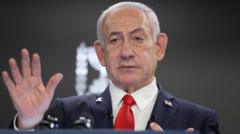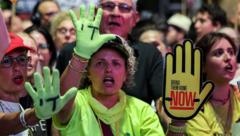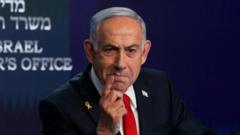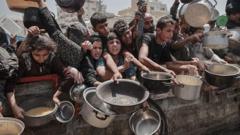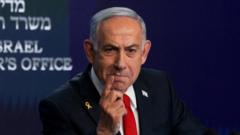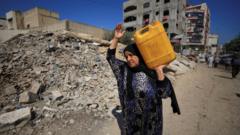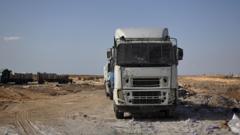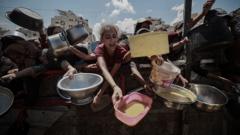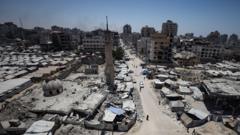**As the conflict in Gaza continues, Hamas employs a risky system to pay civil servants amidst severe economic hardship.**
**Hamas' Covert Cash System: Paying Civil Servants Amid Crisis**
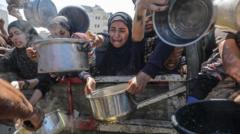
**Hamas' Covert Cash System: Paying Civil Servants Amid Crisis**
**Despite war pressures, Hamas maintains a secret method for salary payments.**
---
Throughout nearly two years of conflict, the Palestinian militant group Hamas has managed to sustain its operations through a covert cash-based payment system that compensates around 30,000 civil servants despite crippling financial pressures and a chaotic economic environment. Reportedly, civil servants have been receiving token payments—approximately $300 each—every ten weeks, enduring the impacts of soaring inflation and food scarcity.
The disturbing reality for these employees has emerged amidst Israel's ongoing efforts to curb Hamas's governance capabilities. With no functional banking system in Gaza, salary distribution has transformed into a perilous endeavor. Civil servants receive encrypted messages guiding them to clandestine meeting points where they receive cash in sealed envelopes, under constant threat of Israeli strikes targeting these transactions.
Employees like Alaa, a schoolteacher supporting a family of six, face dire situations. He recounted receiving tattered banknotes that no vendor would accept and noted the struggle to procure basic necessities like flour. "It’s been two-and-a-half months without proper food," he lamented.
Israeli military operations have targeted key figures within Hamas, including the former head of its finances, raising questions about the group's continued ability to fund these payments. Reports suggest that prior to the intensified conflict, Hamas had amassed substantial cash stockpiles hidden in tunnels, overseen by leadership now deceased.
Hamas historically garners financial support through taxes and import duties on Gaza’s residents, receiving millions from Qatar and claiming additional resources from its military wing's operations funded through Iran. During the war, increased taxation on traders and inflated cigarette sales have provided further revenue streams.
Hamas has also been accused of distributing aid selectively, favoring its supporters while neglecting broader community needs, prompting public outcry. Residents voice discontent toward systemic inequalities, with some alleging that aid meant for the general populace is misappropriated.
As the humanitarian crisis escalates, the dynamic between survival, governance, and popular dissatisfaction unfolds in Gaza, illustrating a complex web of conflict and hardship that constituents must navigate amid a backdrop of violent geopolitical struggles.
Throughout nearly two years of conflict, the Palestinian militant group Hamas has managed to sustain its operations through a covert cash-based payment system that compensates around 30,000 civil servants despite crippling financial pressures and a chaotic economic environment. Reportedly, civil servants have been receiving token payments—approximately $300 each—every ten weeks, enduring the impacts of soaring inflation and food scarcity.
The disturbing reality for these employees has emerged amidst Israel's ongoing efforts to curb Hamas's governance capabilities. With no functional banking system in Gaza, salary distribution has transformed into a perilous endeavor. Civil servants receive encrypted messages guiding them to clandestine meeting points where they receive cash in sealed envelopes, under constant threat of Israeli strikes targeting these transactions.
Employees like Alaa, a schoolteacher supporting a family of six, face dire situations. He recounted receiving tattered banknotes that no vendor would accept and noted the struggle to procure basic necessities like flour. "It’s been two-and-a-half months without proper food," he lamented.
Israeli military operations have targeted key figures within Hamas, including the former head of its finances, raising questions about the group's continued ability to fund these payments. Reports suggest that prior to the intensified conflict, Hamas had amassed substantial cash stockpiles hidden in tunnels, overseen by leadership now deceased.
Hamas historically garners financial support through taxes and import duties on Gaza’s residents, receiving millions from Qatar and claiming additional resources from its military wing's operations funded through Iran. During the war, increased taxation on traders and inflated cigarette sales have provided further revenue streams.
Hamas has also been accused of distributing aid selectively, favoring its supporters while neglecting broader community needs, prompting public outcry. Residents voice discontent toward systemic inequalities, with some alleging that aid meant for the general populace is misappropriated.
As the humanitarian crisis escalates, the dynamic between survival, governance, and popular dissatisfaction unfolds in Gaza, illustrating a complex web of conflict and hardship that constituents must navigate amid a backdrop of violent geopolitical struggles.




